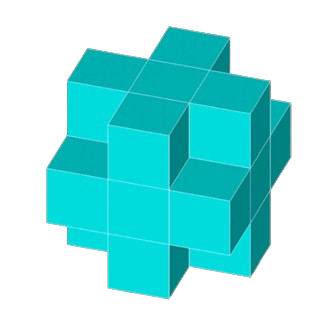Radial Cellular Automaton
Radial cellular automaton is based on the unique principle of
determining the neighborhood of a cell in the form of a radial
shape. Each cell has 8 neighbors that are located along the
diagonals or perpendicular to it. This definition of neighborhood
allows to take into account local interactions with cells in close
proximity to the grain.
The main feature of the model is the use
of a radial vector that determines the direction of interaction.
The radial vector is directed from the central cell to one of its
neighbors and affects the state of the cell in the next
generation. Taking this vector into account allows us to model
anisotropic processes, such as the direction of crystal growth or
the influence of external fields that direct the development of
the structure.
